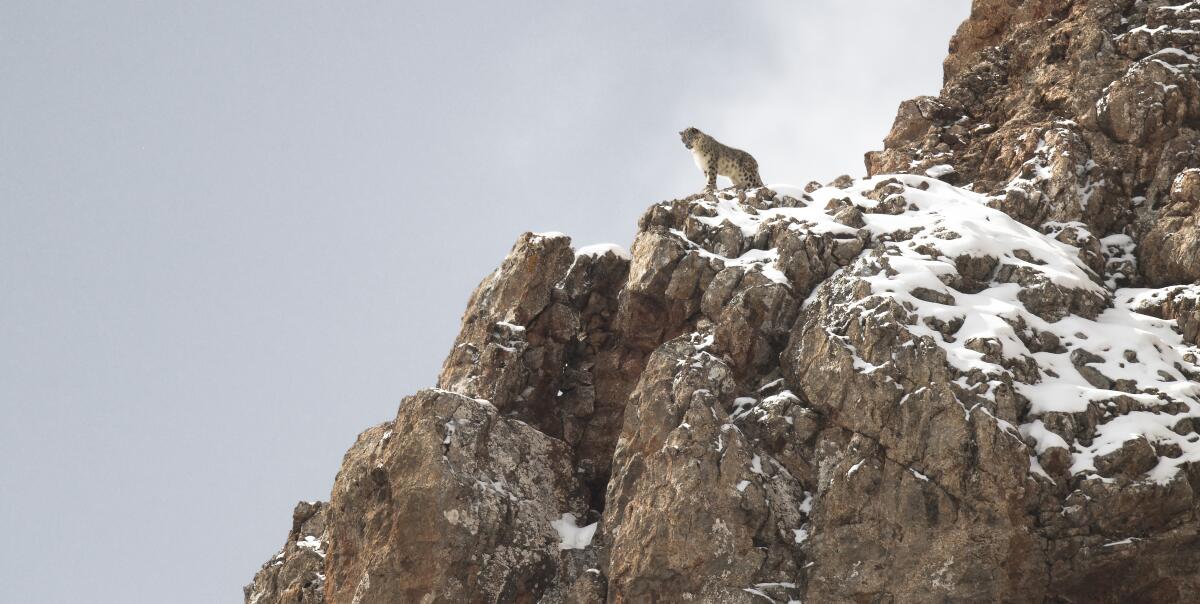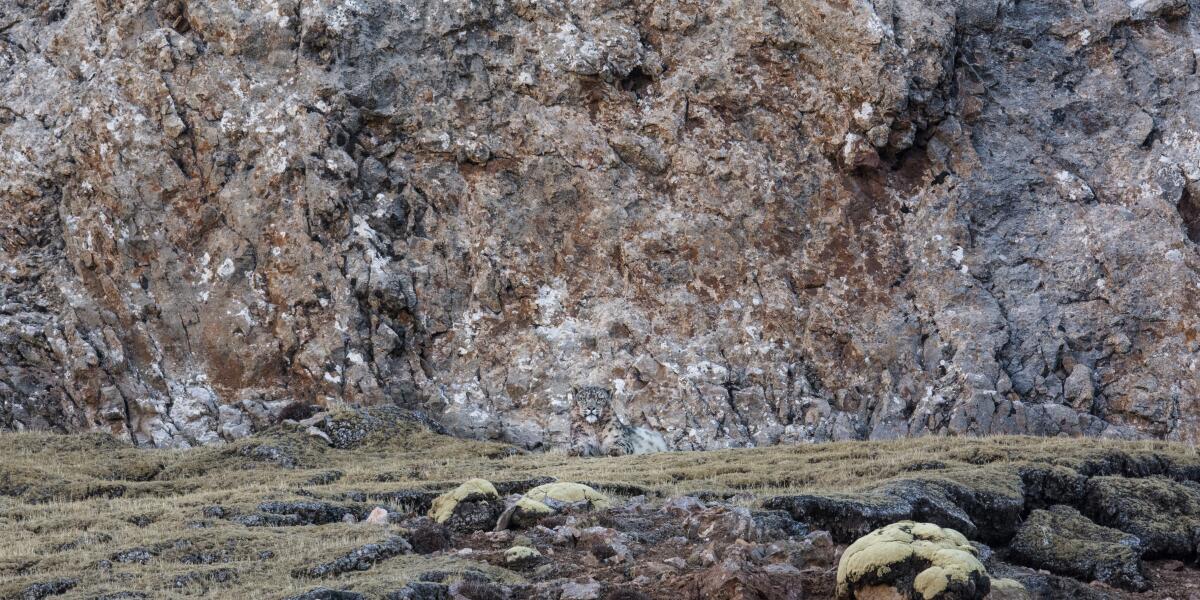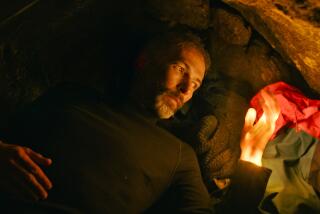Review: Informed by majesty and wonder, ‘The Velvet Queen’ reveals the humane in nature

The Times is committed to reviewing theatrical film releases during the COVID-19 pandemic. Because moviegoing carries risks during this time, we remind readers to follow health and safety guidelines as outlined by the Centers for Disease Control and Prevention and local health officials.
Gorgeous, humbling, looking out-, up- and inward, the documentary “The Velvet Queen” is the rare nature film about not only beauty and beasts but also the very human urge to make sense of our place in it all.
The film is three-way French collaboration wherein wildlife photographer Vincent Munier guides writer Sylvain Tesson on a trip into the Tibetan highlands, filmed by Marie Amiguet (a cinematographer making her feature debut co-directing with Munier). It starts as a quest for the elusive, endangered snow leopard but settles gracefully into an appreciation for the journey and any and all wonders it uncovers: a silhouetted yak in the moonlight resembling a monster from a child’s dream; swirling high-altitude mist that suggests the mountain is breathing; a richly furred Pallas’ cat whose halting movements approaching its prey might make it the best red-light-green-light player ever.
Tesson’s narration and florid commentary provide a few background facts in the early going. He’d long admired Munier’s photography and films, and it turned into a friendship. Now he’s trailing this nature obsessive into cold, arid, picturesque plains, shadowy valleys and rocky elevations where — as Munier likes to point out — they wouldn’t be the only ones doing the watching. (A droll opening shows two local nomads sitting outside the base hut, waiting for the men’s return from one of their excursions, dryly wondering if a pack of wolves ate them.)
Patience is Munier’s abiding principle, which is why his article of faith is in the well-chosen blind, a concealment spot where he’ll happily stay for brutal lengths of time until creatures make their appearance. Or not. Fully accepting that he’s the vulnerable stumbler into conditions and spaces typically inhospitable to humans, Munier still finds spiritual worth in going a day without any sightings. What matters is being present to nature’s breadth as a way of pushing back against what he sees as humans’ ecologically detrimental indifference to their surroundings. It makes him as excited noticing a cave’s polished rock wall, damp prints and mossy strands, which indicate a bear’s onetime habitat, as he is seeing the bear in the flesh. (And they eventually do during one of their stakeouts, which is a thrilling moment.)
The snow leopard, meanwhile, is whispered about as if it were the alluring suspect in an existential noir. Munier says he once photographed one without realizing it, his viewfinder attention drawn toward centering a perched falcon — only years later did he notice the leopard peering over a nearby ridge, blended into the terrain. That image from his archive (which we get to see) is indeed a stunning example of hiding in plain sight, and it helps train our eyes for later instances of camouflage and emergence, when Amiguet’s camera is fixed on a craggy hillside, and Munier is informing us of a creature’s presence. In these moments, “The Velvet Queen” can feel like a series of paintings that occasionally come to life.

Tesson’s soft-spoken musings, pulled from his notes, are a more scattershot element. Sometimes they’re wonderfully evocative of his companion’s philosophy of loving the Earth through looking deeply at it, and what it feels like to see these harsh landscapes and their inhabitants as Munier does. Sometimes they’re a tad overwrought as cosmic commentary, as when he says, “Prehistory wept, and each tear was a yak.” The more psalm-like accompaniments outweigh the purpler prose. (Tesson’s writings on the trip were published as “The Art of Patience: Seeking the Snow Leopard in Tibet.”)
The key takeaway is that “The Velvet Queen” feels like a humane adventure, not some patronizing tour of the wild. No spoilers, either, on whether their search yields the desired glimpse (a “tail” end?), but then again, when was a detective story about the arrest, or a road-trip movie about the destination, or a fable about the moral? This benevolent hunt along stunning peaks and vast plateaus is rich with animal majesty and unspoiled geographical magnificence. And most important, it never feels like simply waiting for something.
'The Velvet Queen'
In French and Tibetan with English subtitles
Not rated
Running time: 1 hour, 32 minutes
Playing: Starts Dec. 22, Laemmle Royal, West Los Angeles
More to Read
Only good movies
Get the Indie Focus newsletter, Mark Olsen's weekly guide to the world of cinema.
You may occasionally receive promotional content from the Los Angeles Times.










